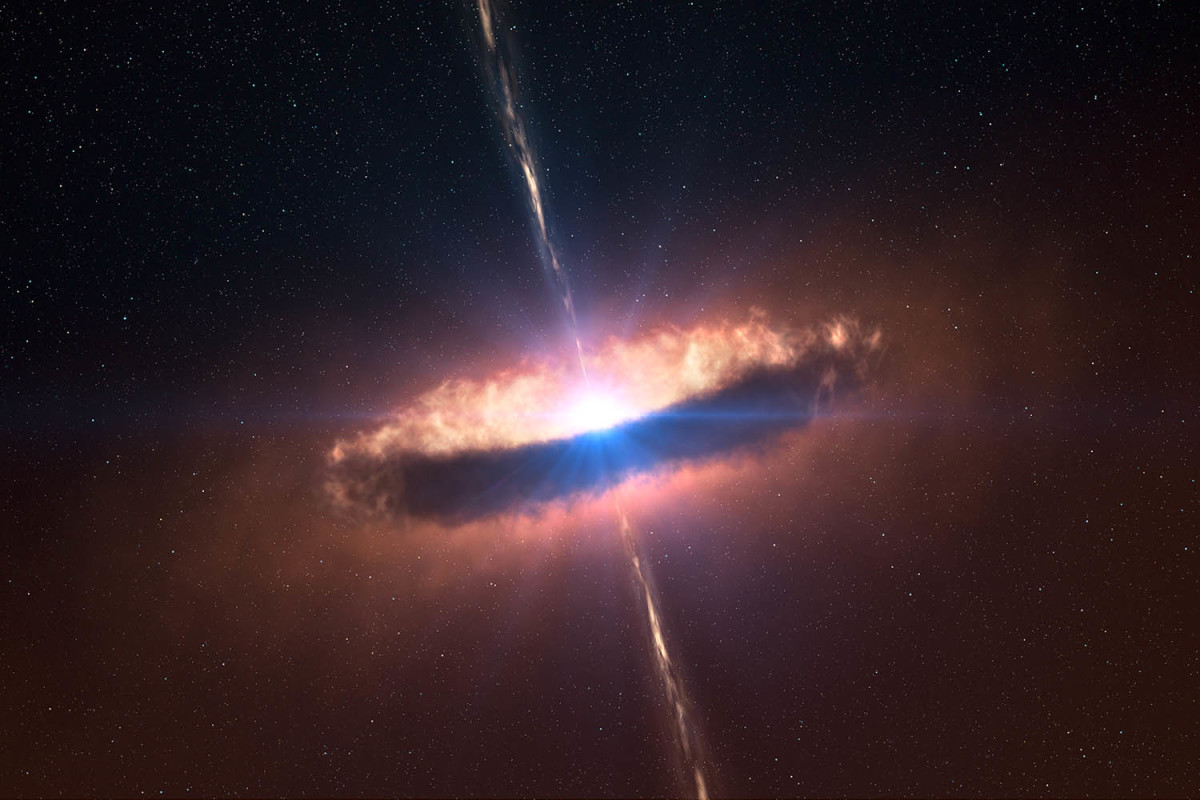Neutron Stars & Pulsars
 |
Fig. 1
An artists rendition of a neutron star |
Neutron stars are (relatively) tiny, incredibly dense stars made up of almost only neutrons (hence the name) that are not too common in the universe. We know of about 2000 in the Milky Way, most of which are radio pulsars, which will be explained in the following paragraphs. A neutron star has a mass of about one-and-a-half times the mass of the sun, but is not much bigger than a small city, only about 15 km in radius. This means that a singular handful of a neutron star material would weigh about 10 million tons! Imagine that.
What is it about neutron stars that differentiate them from other marvels of the universe? Well, these stars form due to the intense gravitational collapse of remnants of a massive star in a supernova explosion. As you (should) know from my post on black holes when stars collapse, if they have sufficient mass, they form black holes upon the supernova explosion. But, these same stars may form neutron stars if they do not have enough mass to form a black hole.
There are many types of neutron stars, such as pulsars, magnetars, and binaries all with different properties. In my accredited opinion, pulsars are the most noteworthy out of the three as they emit large amounts of electromagnetic radiation and spin very, very rapidly. This is thought to be because of the conservation of angular momentum (think about it as speed). The matter that falls into the core has a certain amount of this momentum that is transferred to the core and thus increases the rate at which the star spins. It is similar to how an ice skater increases their spin as they pull themselves in. This radiation forms due to the magnetic field of the star causing gas to go to the poles of the pulsar, which in turn causes excitation of the gas, which emits light in the form of radio and X-rays. Moreover, if the magnetic field is strong enough it can cause cracks in the surface of the star, sending gamma rays out. We can interpret these pulses or flashes as signals.
This actually stems into quite an interesting story, the discovery of pulsars in nature. In 1967, astronomer Jocelyn Bell Burner was using a radio telescope which strangely picked up a radio signal with astounding regularity. It came in pulses every 1.33 seconds or so, so at first, she believed it was a man-made signal reflecting off of nearby buildings or satellites. However, she later found out it was coming from an object outside of our solar system. As there was no logical explanation for that mechanism at the time, the media instantly turned to the notion of aliens. Not completely illogical from their standpoint, but absurd nonetheless. But, as time progressed, scientists found more and more instances of repetitive 'pulses' and so sadly ruled out the thought of little green men. Nonetheless, an amazing astronomical entity was founded, leading to the advancement of science and humanity.
So, what do you think of neutron stars? Leave your comments and thoughts down below!
Comments
Post a Comment